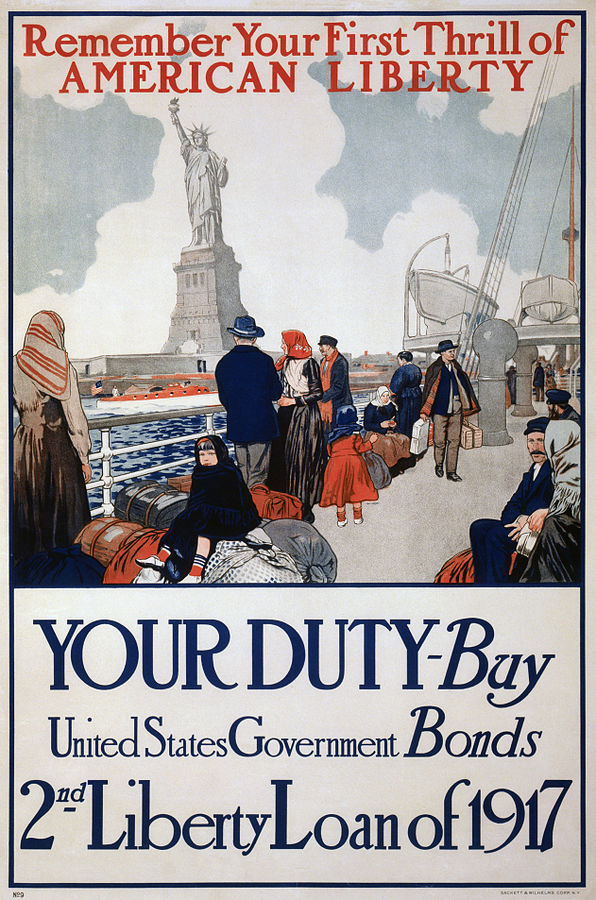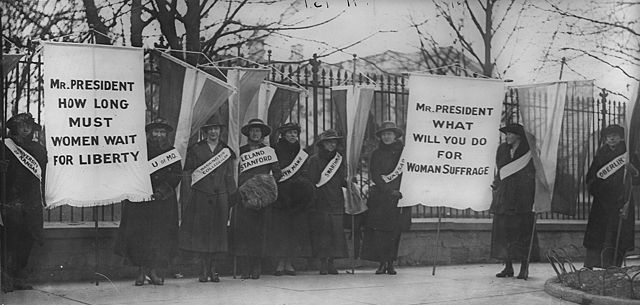The Statue of Liberty: a French connection in New York harbour

The Statue of Liberty, or more accurately, ‘Liberty Enlightening the World’ was originally destined for the Suez Canal. But after the concept was rejected by the Egyptians, the statue was built in Paris by the famous Gustave Eiffel, based on a design by the all but forgotten Frédéric Auguste Bartholdi.
 Once completed, she was sent as a gift to America from the people of France to mark the centenary of the signing of their Declaration of Independence. The leaders of the French Revolution so admired the American Declaration that it partly inspired the French Déclaration des droits de l’homme et du citoyen.
Once completed, she was sent as a gift to America from the people of France to mark the centenary of the signing of their Declaration of Independence. The leaders of the French Revolution so admired the American Declaration that it partly inspired the French Déclaration des droits de l’homme et du citoyen.
So ‘Liberty’ has stood as a welcoming symbol in New York Harbour since 1876, where she commemorates the core idea of the Declaration: “We hold these truths to be self-evident, that all men are created equal…”
“All men”?
The symbolism on the statue is obvious and it includes the concept of freedom from slavery and bondage. Of course, this should have applied – in theory anyway – to women as well as men. But when Thomas Jefferson was drafting the Declaration, married women were under control of their husbands.
According to the laws of the new United States, women still could not own property, and they were not able to enter into a legal contract. Nor could they vote. Just as they had been in colonial America, women remained the dependents of men and they were kept on the sidelines.
The Statue of Liberty: a beacon to newcomers
Over the years, ‘Liberty’ has also been known as the ‘Mother of Exiles’; in the early twentieth century, she greeted millions of immigrants on their way to nearby Ellis Island to seek a new life in America.
But in 1924, the Immigration Act was revised because of the fear that domestic unemployment would rise as a result of the unfettered influx of foreign labour – plus a paranoid horror of Bolshevism.
The Open Door slammed shut. Southern and East European numbers were curtailed and there was an outright ban on Arabs and Asians.
The core concept was that immigration would not be allowed to change the “national character” of the United States. (Hope you all spot the similarities with current right of centre political ideas.)
Votes for (copper) women
When ‘Liberty’ was inaugurated in New York harbour, 600 guests were invited to the opening ceremony. Only two were women.
But on a boat on the Hudson River, Lillie Devereux Blake, president of the city’s only votes for women organization held up a placard. It read: “American women have no liberty. Give us the vote.”
Suffragettes at the time pointed out that, had the statue herself wanted to cast a ballot in an election, she would not have been allowed to do so. For women, the right to vote was still a long way off.
Even in America and France, despite their high-minded declarations on human rights, women were only granted the vote in 1920 and 1944 respectively.
Fast forward to today. Have things improved since the Declaration documents were penned? Are all humans born equal? Well, “Yes”, in some respects and in some countries, but certainly not worldwide. Even in the West, thorny gender issues remain. What about the pay gap?
What do you think the Statue of Liberty represents now? Are French and American ideas of liberty still relevant to their realities? Start the debate in the comments!
Image credits:
1. ‘Statue of Liberty, landmark’, Unsplash via Pixabay
2. ‘The bridge can be seen behind the replica of the Statue of Liberty’, Adrian Pingstone via Wikimedia
3. ‘A 1917 poster advertising US Government bonds. The poster depicts immigrants on a ship, sailing past the Statue of Liberty’, Sackett & Wilhelms Corp N.Y via Wikimedia
4. ‘Women suffragists picketing in front of the White House’, Library of Congress via Wikimedia







